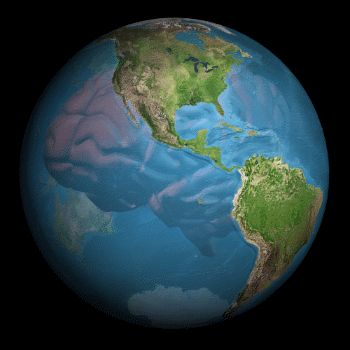Completing the American Revolution
Philip Finkelstein
[Reprinted from a pamphlet announcing the creation of
L.E.A.F. (Land, Equality And Freedom), 1974. Philip Finkelstein, a
member of the Lindsay Mayoral Administration in New York City, later
became Director of the Henry George School of Social Science in New
York]
While we are often reminded that we are living in a "post-industrial
age" and that technological changes produce the "future
shocks" that determine our response to the modern environment, we
tend to forget and often ignore the crucial role of that oldest and
most pervasive source of wealth and power - the land. Feudalism may be
relegated to medieval history, but its vestiges, in the form of all
the trappings of ownership and transfer of real property, still
substantially govern much of what happens to America approaching its
200th birthday.
Who owns America, how is that land used, how much is it worth, how
much does it contribute -- these are the questions LEAF hopes to
answer. A full-scale effort in each of the nation's twenty-six
Standard Metropolitan Statistical Areas (SMSA) will document in a
simple, clear and unprecedented array of facts just who controls the
single most valuable resource that literally makes up our country, not
just the great national landmarks and celebrated vistas, but the lots
and blocks and shore fronts and hinterlands that we like to think of
as ours but seldom are.
People may consider land significant in an open or developing area,
where it can be seen as such, or in the environmental sense, where it
can be enjoyed as such. Yet some of the most important land of all is
urbanized and developed, covered with concrete and steel, where little
grows and nothing is mined and every scene is man-made. Despite its
invisibility, it is the land of the city, who owns it, how it is used
and how much it pays back to society that determine the fortunes of
that city, if it will be developed, neglected, rebuilt or allowed to
deteriorate, become a place people will flock to or one that most
would shun. It is impossible to talk seriously about any of our
so-called urban problems of housing, transportation, employment,
municipal finance, without some understanding and knowledge of the
very ground, literally, on which it is all based.
The greatest single asset of any jurisdiction, be it city, rural
county or suburban village, is its land. Land in the form of property
taxation bears the major burden of financing local government, all the
increases in federal and state aid and revenue sharing
notwithstanding. Land is the only resource subject to local control,
with each jurisdiction in fact and law defining itself by its
geographic bounds. Finally, and most crucially, land is the one
resource that cannot escape jurisdiction. Unlike people, money,
enterprise which can move about to their advantages, even at great
cost, the land is fixed in its location, the basis at once for its
uniqueness and its value.
The land of New York City, for example, has made it the center of the
world's foremost metropolitan area. A magnificent deepwater port that
attracted people and goods from all over, New York has built its
position on a concentration of diversity, a wealth of economic
activity spanning every field of human endeavor. With the decline of
the port and the development of competitive transportation modes, the
city has been turning its unique location values to other central
functions, as office headquarters, cultural, scientific, health and
education and social services. The concentration of stores,
amusements, amenities and services are still a mecca for the seekers
of pleasure and profit, keeping the city viable beyond its original
economic premise. The land of the city is still among the most
valuable on earth.
Yet there are vast problems. Unemployment coupled with inflation has
hit population centers hardest. Millions of square feet of new office
space stand vacant in New York. Acres of once viable residential
neighborhoods deteriorate HI rubble as construction comes to a
standstill. There are too few places between those that only few can
afford and those where even fewer would willingly live. The staggering
contrasts between extravagance and despair have long been the hallmark
of big city life; and no fashionable diagnosis, be it in the realm of
social pathology or current economic condition, can fully explain away
the harsh reality. For the real answers we must still look to the
land.
The real property of New York City pays almost $3 billion of the
$11.5 billion municipal budget, the largest single source of local
revenue. Manhattan with its smallest land mass but most intensive
development pays nearly half of the tax bill, with more than $18
billion of the total city assessment role of nearly $40 billion. Yet
even these fabulous sums only begin to reflect the true wealth of the
city in property, especially in the location values of the land. Every
day parcels are sold at more than double their assessments. Many of
these are bought for their land values alone, with the current
improvement scheduled for early demolition to make way for a newer,
more profitable use. While construction has been badly hit, there is
still enough interest in city property to create a lively market and
prices of land have more than held their own. Nor are landholders
convinced that prices will not go still higher, despite the recession.
Even in slum areas where landlords allow their properties to
deteriorate and then abandon them the value of land on condemnation
may well exceed an assessment. Stocks and bonds may slump, businesses
fail, giant building developments go into bankruptcy, yet the price of
land in the city generally follows only one direction -- up!
Who are these fortunates who own the land of New York, be they the
millionaire assemblers of midtown tracts or the slumlords of Harlem,
South Bronx and Central Brooklyn? What are the benefits they derive
from building -- or not building, from improving or promoting decay?
How much of the real property tax bill is borne by apartment dwellers,
who can't deduct it from their income tax, as contrasted with
homeowners, who can? How much do the occupiers of the most valuable
sites of the city pay for the benefits of their locations and how much
do they gain at the public expense?
Perhaps there will be more dramatic questions to be asked about the
vast stretches of land outside the big cities, about suburban tracts
and the decisions to build roads, about farmers less concerned with
the crops than the price of acreage to a developer, about
conservationists battling to maintain rights for the exclusive few
over the needs of many, or of the greed and indifference of public and
private owners in their misuse of the portions of this earth they
consider their own.
We need to know a great deal more than we now do about the incidence
and consequence of land ownership and use in this country. It is time
for this information to be clearly and bluntly available to the
citizen, the taxpayer, the voter, as a matter of right. When all of us
know who owns America, we can undertake the task of providing an
equitable share of our country's great bounty freely to all Americans.
That is the goal of Land, Equality and Freedom, a new LEAF we must all
turn in the continuing American Revolution.
|











